Island by island, conservationists are removing stoats, deer and rats from Fiordland, as part of a huge effort to restore biodiversity in the remote and wild southwest corner of New Zealand.
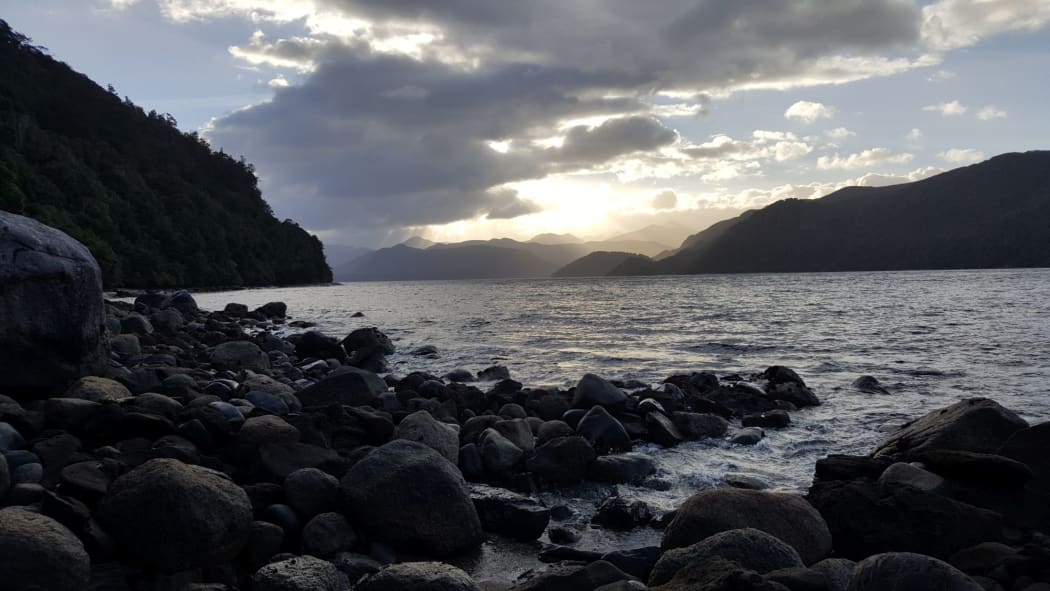
View from the shore of Coal Island, looking up Preservation Inlet in Fiordland's remote southwest. Photo: RNZ / Alison Ballance
Subscribe to Our Changing World for free on Apple Podcasts, Spotify, Stitcher, Google Podcasts, RadioPublic or wherever you listen to your podcasts
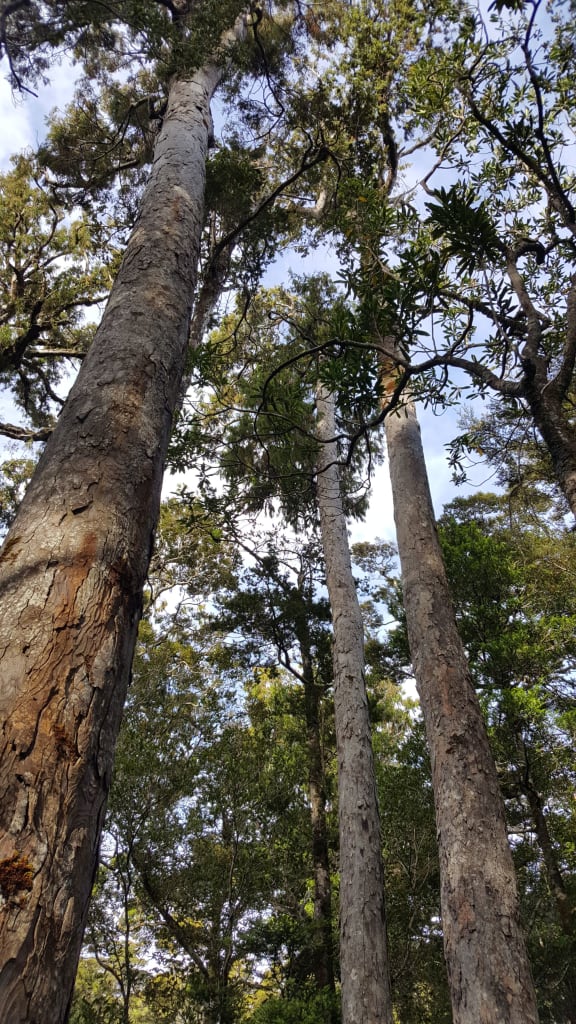
Forest interior on Coal Island, Fiordland. Photo: RNZ / Alison Ballance
Lindsay Wilson has spent the past decade working for the Department of Conservation (DOC), overseeing an ambitious programme to restore biodiversity on islands throughout Fiordland.
Standing on the back of a boat in Chalky Inlet, on one of his last days in the job, he reflected on what had been achieved during his time.
“A highlight for me has been seeing a whole number of our islands become predator-free, and then subsequently translocating a range of threatened species onto those islands.”
“The biggest single highlight would be getting saddleback, or tieke, back onto Resolution Island and also Pigeon Island …where Richard Henry used to live years ago.”
Richard Henry is considered the godfather of conservation in New Zealand. In the 1890s, he lived and worked in remote Dusky Sound as the caretaker of Resolution Island. Resolution is Fiordland’s largest island and one of New Zealand’s first nature reserves.
As introduced stoats spread across mainland New Zealand, decimating native bird populations, Richard Henry’s task was to rescue rare birds such as kākāpō and kiwi from the mainland, and move them to a safe island lifeboat.
His dream was shattered when stoats swam to Resolution Island in the late 1890s, and for the next hundred years stoats and the many other introduced pests slowly ate their way through New Zealand’s unique wildlife and ecosystems.
“If you go somewhere like Dusky Sound,” says Lindsay, “then from the outside, it still looks much like it would have looked when Captain Cook and when Maori arrived hundreds of years ago.”
“But actually, on the inside, it's quite a different story - you've got a whole range of predators there. Possums, rats, mice, deer.”
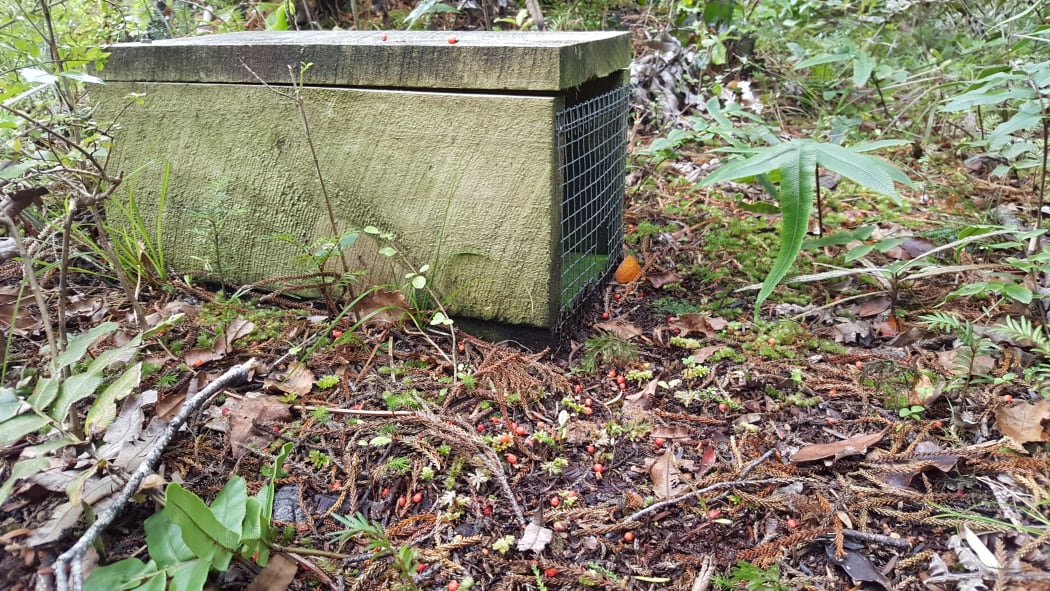
Thousands of stoat traps are being used in Fiordland to keep islands free of the voracious introduced hunter. Rimu fruits carpet the forest floor around this trap. Photo: RNZ / Alison Ballance
Removing pests from Fiordland’s islands
We don’t yet have the technology to eradicate pests from mainland New Zealand, but in the early 2000s DOC began a concentrated effort to remove stoats and deer, and in some cases rats, from islands in Fiordland. They started with its two largest islands: Resolution (>20,000 ha) and Secretary Island (>8000 ha) in Doubtful Sound.
Professional cullers are used to get rid of deer, while traps are used to catch rats and stoats. Toxic baits are not used as they quickly become mouldy and unpalatable in Fiordland’s extremely wet climate.
Since then the eradication programme has spread across the fiords to smaller and smaller islands.
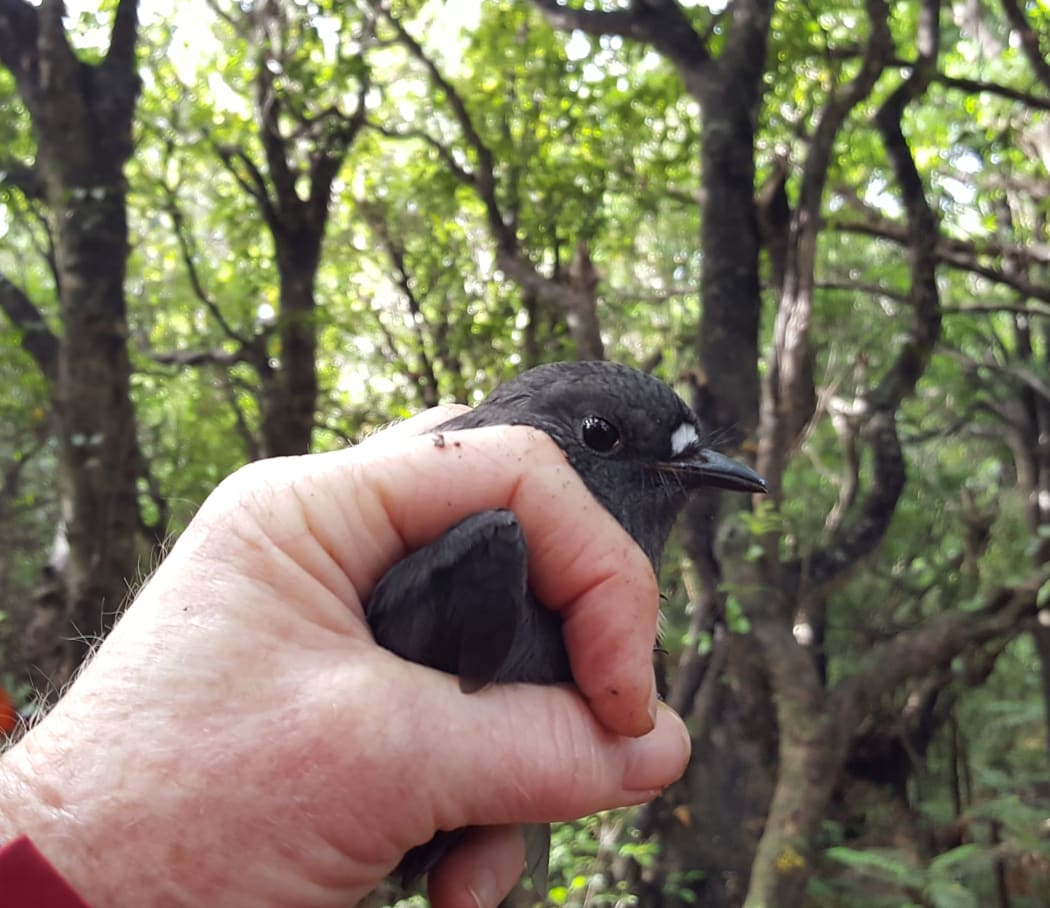
South Island robins are being moved between predator-free islands in Fiordland. This robin was caught on Chalky Island and released in Martin's Bay in April 2019. Photo: RNZ / Alison Ballance
Returned to their former glory
As the pests have been removed, rare native species have been returned – mohua, South Island robins, tieke, kiwi.
Ultimately, Lindsay’s hope is to “restore those islands to some semblance of their former glory, with the full range of species that used to be there in the past.”
The intention is for the pest-free islands to become ‘biobanks’, which help secure the survival of the species. Once numbers build up enough, it becomes possible to transfer animals from there to other islands, and hopefully, at some point in the future, back to the mainland.
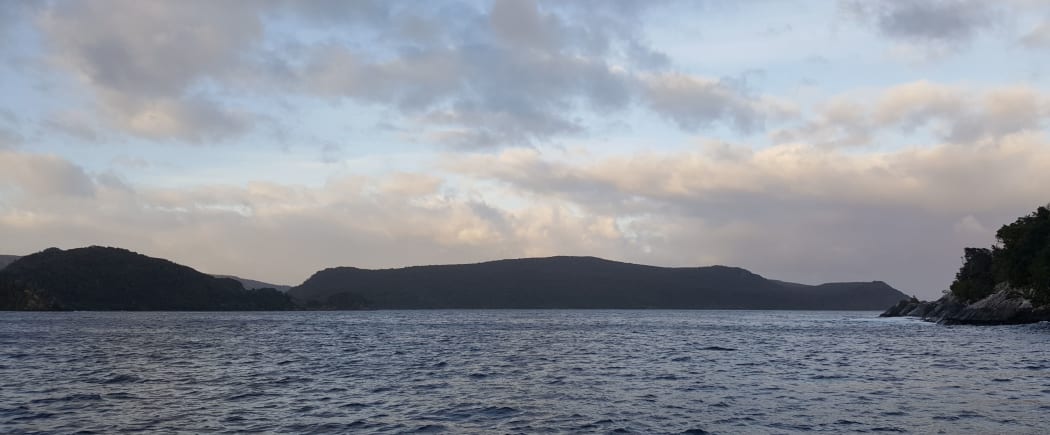
Looking west down Preservation Island towards the low, brooding shape of Coal Island. Photo: RNZ / Alison Ballance
A helping hand by the Coal Island Trust
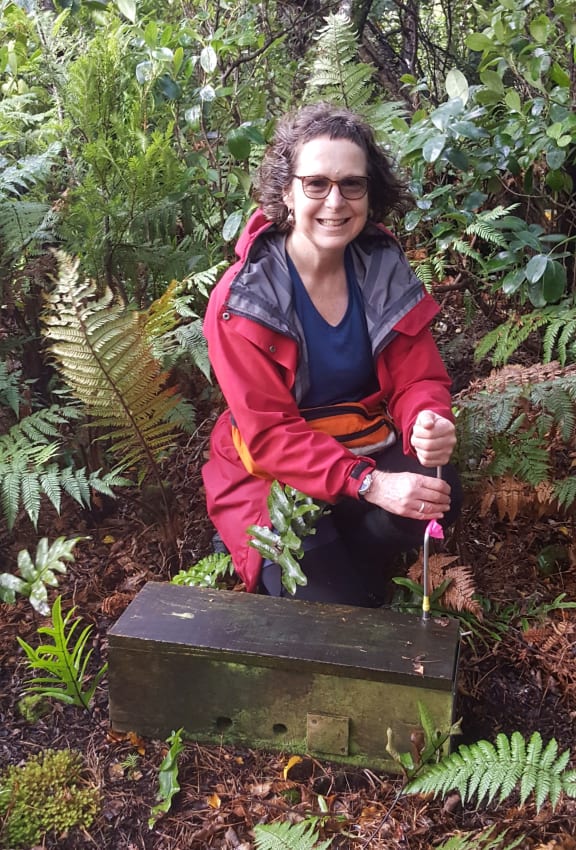
Our Changing World producer Alison Ballance helping check stoat traps in Fiordland. Photo: RNZ / Alison Ballance
DOC isn’t alone in its endeavours: community groups and companies have ‘adopted’ different islands, providing volunteer labour as well as financial support.
One such group is the Coal Island Trust, also known as the Southwest New Zealand Endangered Species Trust. It was created by a small group of Southland locals who were keen to restore Te Puka Herenga or Coal Island (>1100 ha), which lies at the mouth of Preservation Inlet.
Chair Ali King says the Trust had a low-key beginning in 2004.
“There was a mate of mine who was a helicopter pilot by the name of Wayne Pratt. He used to fly over [Coal Island] all the time. He could see the potential in the island.”
“So we had a bit of a get-together, a few beers, and he said ‘we can do this. Let's turn this into a predator free island’.”
Coal Island had mice, stoats and deer, but no rats. All three pests have now been removed from the island, although there is a constant risk of reinvasion from stoats swimming from the nearby mainland.
The 2008 mouse eradication was, at the time, the largest in the world.
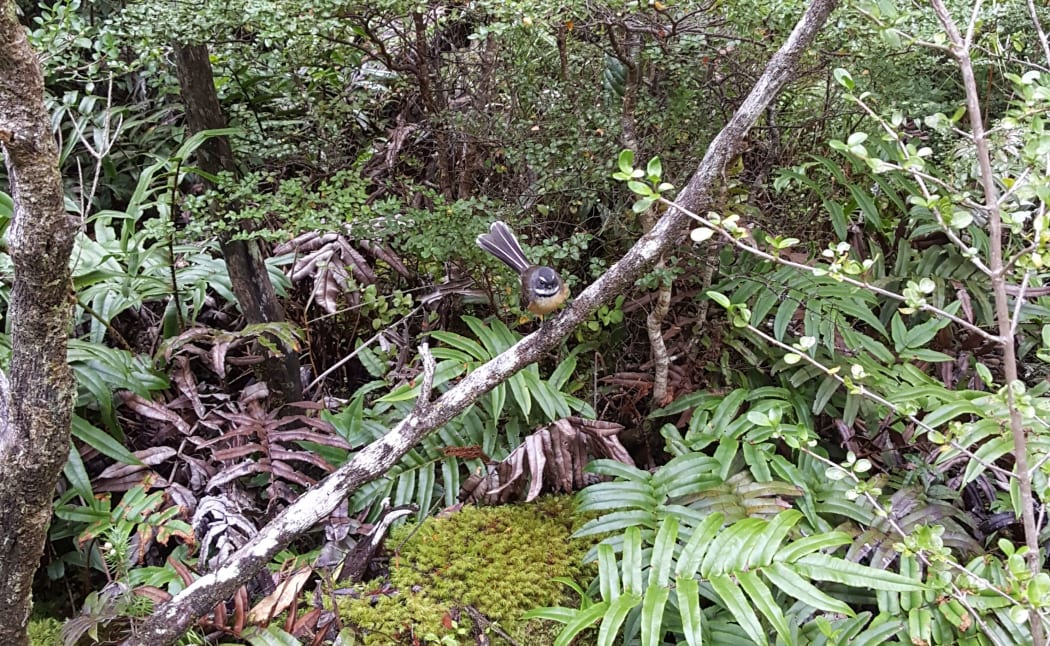
Native birds such as fantails (pictured), bellbirds and kaka are thriving on Coal Island, which is free of introduced pests. Photo: RNZ / Alison Ballance
A change for the better
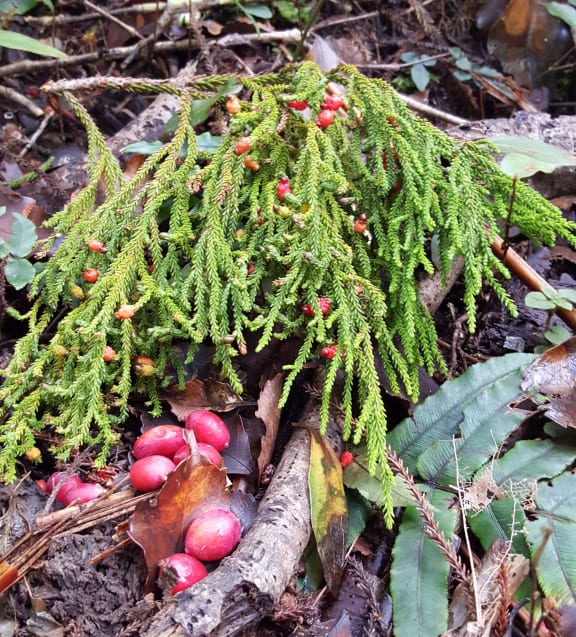
Rimu and miro fruit litter the ground on Coal Island. The summer of 2018-2019 was a mast-seeding event that resulted in prolific fruit and seed production, which has boosted native bird breeding. It will also lead to a plague of rats and stoats. Photo: RNZ / Alison Ballance
Ali says the change in the island has been remarkable.
“Before we eradicated the deer on Coal Island you could see 200 metres through the bush. It was open and eaten out,” says Ali. “Yeah, it was quite devastating.”
“Since we've eradicated the deer, we are constantly having to clear the tracks because the trees and the seedlings are growing that fast, and you can only see sort of 50 meters in front of you.”
Since mice and stoats were removed native birds such as bellbird and tui are thriving, and Haast tokoeka (kiwi), robins and mohua (yellowheads) have been moved to the island.
Ali says they have to be vigilant to keep the island pest-free.
“The vigilance involves checking the 150-or-so stoat traps up to six times a year on the island itself,” says Ali. “We also run another of two lines of traps on the mainland."
"Our idea is that it will stop them on the mainland before they can swim across to the island.”
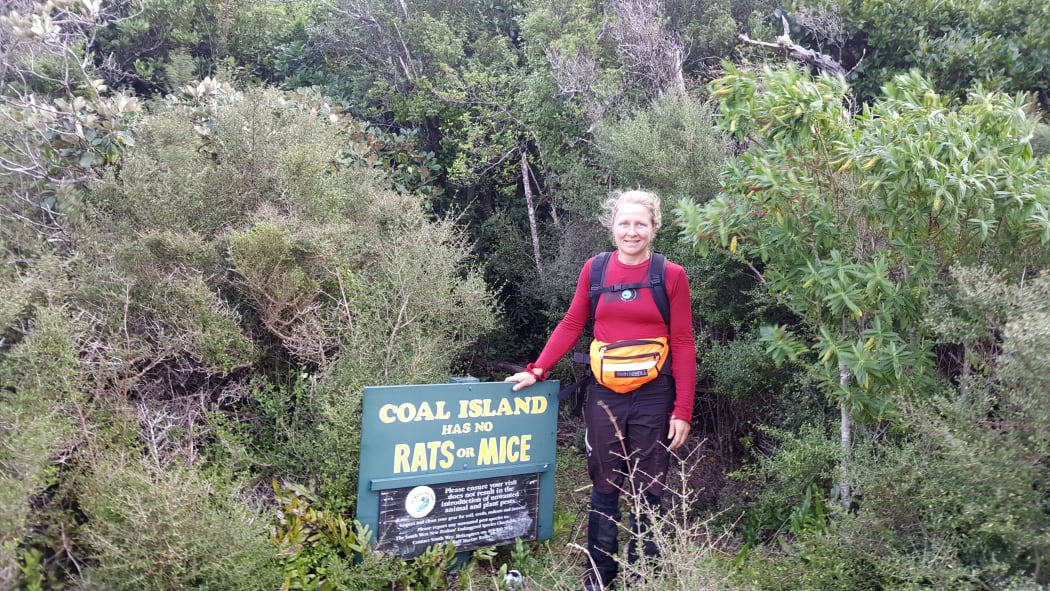
Megan Willans, a trustee of the Coal Island Trust, at the end of a day checking predator traps on the remote Fiordland island. Photo: RNZ / Alison Ballance
Coal Island trustee Megan Willans says that the advantage of Coal Island is its size.
“It's a really good-sized island,” she says. “You can put a population of forest birds here and know that there's enough land for them to have a good self-sustaining population providing the predators don't get back. So that's pretty neat.”
The Trust is thinking about a seabird restoration programme for the island, and Coal Island is one of the islands currently being considered as a future home for kākāpō
“That's our ultimate goal,” says Ali. “If we can get those big green parrots on the island, we'll be happy.”
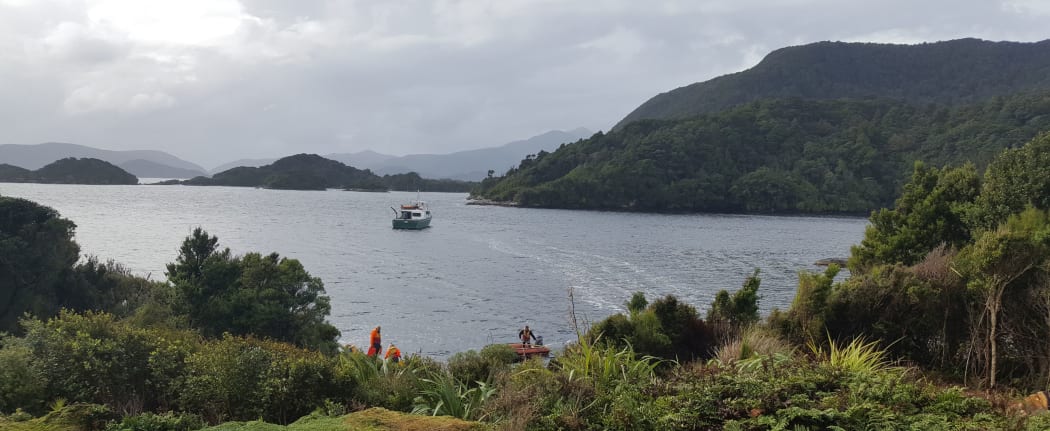
The sound of bird song from predator-free islands in Fiordland carries across the water to boats such as DOCs 'Southern Winds', anchored in Dusky Sound. Photo: RNZ / Alison Ballance
Bird song from the sea
Chris Pascoe is skipper of the DOC boat the Southern Wind, which supports DOC’s island restoration work in Fiordland.
He says that he can really notice the difference between the quiet sound of the mainland and the loud chorus of bird song that now rises from the islands.
“When the boat shuts down I can hear the birds and absolutely know the difference,” he says. “We might be anchored adjacent to the mainland where there's less bird life. And then we come out to the islands and you certainly notice that. All of a sudden you're surrounded by kaka, it's amazingly noticeable even from the boat.”
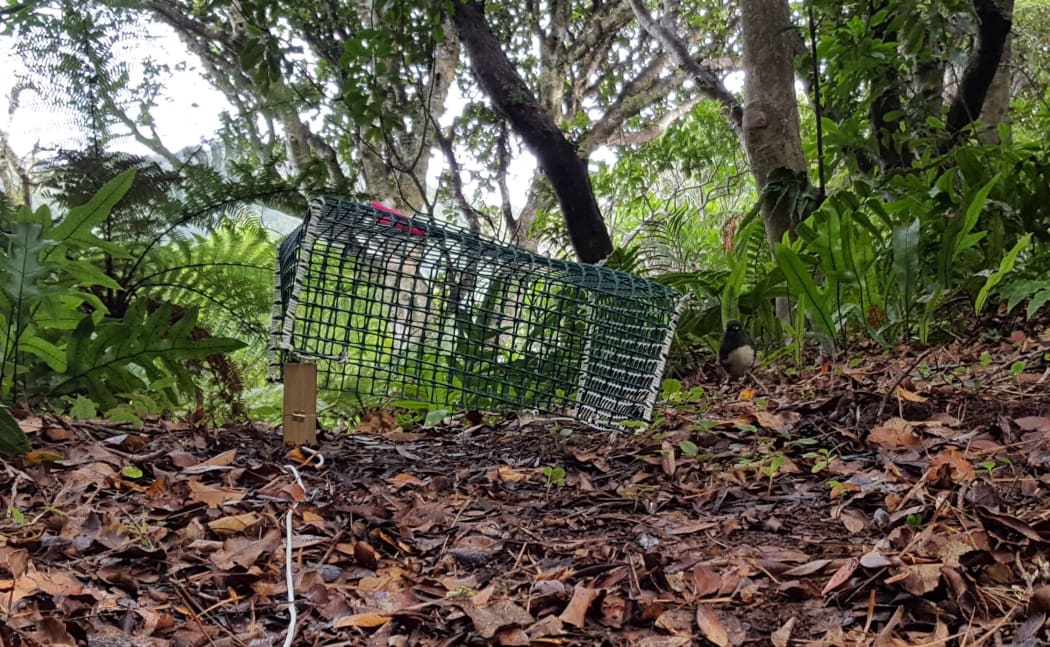
Using a drop trap to catch South Island robins for translocation to a predator-free island. The robin is standing outside the trap, on the right. Photo: RNZ / Alison Ballance
Find more stories about Fiordland wildlife and conservation
Turn around in takahē’s fortunes
Tawaki – the mysterious forest penguin
Eradicating stoats from Resolution Island
For a complete rundown on what DOC has been doing in Fiordland, check out the publication Conserving Fiordland's Biodiversity, which covers the period 1987-2015 and provides a comprehensive description of everything that has happened.


